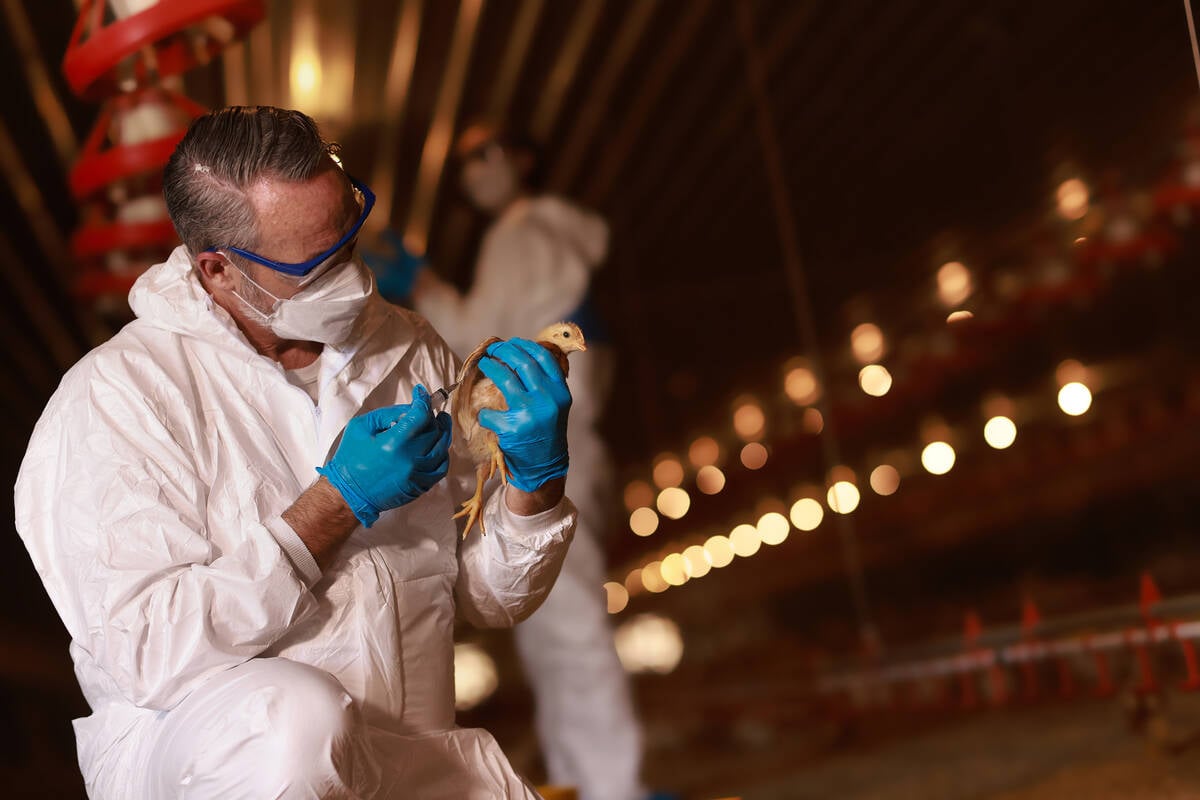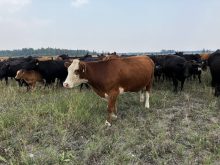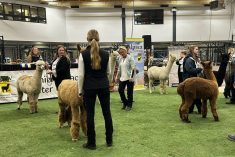(Resource News International) — The number of hogs in Canada has been on a steady decline over the past five years, and there seems to be no end yet in sight to the ongoing contraction, according to industry officials.
“Given the current status of the hog industry in Canada, there does not appear to be an expansion on the horizon that would see an increase in hog output,” said Martin Rice, executive director with the Canadian Pork Council. “There may be a small drop in the level of annual decline, but that is about it.”
Read Also

Europe, North America face early wave of bird flu cases
An unusually early outbreak of bird flu cases affecting high numbers of wild birds and poultry farms across Europe and North America is raising concerns of a repeat of previous crises that led to mass culling and food price spikes.
Canada was still undergoing a negative year-to-year change in terms of Canada’s hog breeding population, he said, with the quarter-to-quarter decline also intact.
“For a while, it looked like that the year-to-year, quarter-to-quarter, percentage drop was starting to slow, but that did not last,” Rice said.
“As of Oct. 1, 2008 we were looking at Canada’s breeding herd declining by over seven to eight per cent on an annual basis, but the quarter-to-quarter decline began back to back off,” Rice said.
Canada’s year-to-year decline had begun to back off right up until the first of this year, when the year-to-year change dropped below five per cent. As of April 1, 2010, the decline jumped again, and was closer to six per cent, he said. “So the contraction in Canada’s hog breeding herd has not begun to turn around yet.”
The hog industry, he said, is currently dealing with a lot of individuals who are managing four to five years of accumulated losses and who are still in the process of downsizing, if not getting out of the business altogether.
“There are a few hog operations in Canada that have begun to solidify their finances but there are also operations who are still dealing with a very low flow of equity,” Rice said.
“Uncertainty”
Canada’s financial institutions also appear unwilling to fund expansion of the hog industry at this time, he added.
“Financial institutions are not going to be willing to fund any expansion until they see the equity returns improve to over 50 per cent,” he said. “Not many hog operations have over 50 per cent of their financial returns coming back as capital rather than in debt.”
If there is to be a turnaround in Canada’s hog breeding herd there will need to be some kind of period of profitability that will reduce operating credit and ensure that the long-term credit can be serviced, he said.
Rice estimated the downtrend in Canada’s hog breeding herd will likely continue over the next two to three years.
“We will have shaken a lot of the uncertainty out of the hog market place during the time frame,” he said.
He also pointed out that the increased potential for more feed grains being available in Canada does not automatically suggest hog operations will be able to expand.
“Cheap feed will help hog producers stay in business, but it does not favour new hog production investments,” Rice said, noting those operations still have to face other capital costs.
Canada’s hog breeding herd peaked in January 2005 at 1.63 million head, Rice said. As of April 1, 2010, it was down to 1.3 million. “That was a decline of over 20 per cent.”
In terms of pigs on farm, the decline was even faster, although at a six-month lag.
Canada’s inventory of pigs hit a peak of 15.2 million head as of July 1, 2005. Those numbers were down to 11.7 million as of April 1, 2010. “So in less than five years, that was a decline of 24 per cent,” Rice said.
The rate of decline, however, has started to decrease, with Rice indicating that the rate of decline, which was in the seven per cent range, is now in the two per cent area.
“I don’t think the decline rate will be much over the two to three per cent range going forward, but the contraction pace will still continue over the next couple of years,” he said.
“Economies”
Rice said the only way the contraction in Canada’s hog breeding herd is going to change is if the profitability of raising a pig climbs significantly.
“Most hog operations will need to at least break even or see a bit better returns for a period of time, before the thoughts of expansion will even get any kind of consideration,” he said.
“Without a period of better than break-even returns, it will be difficult to offset the negative returns.”
Godwin Pon, a livestock analyst with the Saskatchewan Ministry of Agriculture in Saskatoon, also hoped the downward cycle in hog profitability begins to change soon.
A change in the cycle, he said, will be signalled by changes in the globe’s economic situation and how fast pork importing countries can recover.
“Unfortunately, there is no clear answer to when the economies will be strong enough,” Pon said.
Canada’s best pork-importing customers include the U.S., Japan and China as well as places such as South Korea and Russia, Pon said.
“The demand to bring in more Canadian pork from these countries will be dependent on each of their economies being strong enough,” he said.
Such issues as H1N1 and the strength of the Canadian dollar will be secondary concerns that will also have to be addressed, Pon said, before hog herd expansion can be considered.














